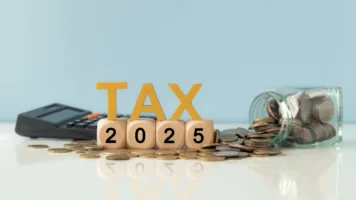What is Superannuation & How Does it Work in Australia?
For many Australians, trying to set yourself up for retirement is a daunting task. Australia’s retirement safety net, superannuation, is an important component of supporting yourself during your twilight years. But what is superannuation and how does it work in Australia? We’ll break down what superannuation is, how it all started, and what’s involved so you can feel more in control of your retirement plans!
Overview:
- What is superannuation?
- How does superannuation work?
- How to calculate superannuation
- How to find lost superannuation
- FAQs
What is superannuation?
Superannuation, most commonly known as ‘super’, is Australia’s retirement savings system designed to help Aussies accumulate funds to support themselves in retirement. These funds are then managed by organisations known as ‘super funds’.
Types of super funds
Once you start work, you are usually able to choose whichever super fund you prefer, or alternatively, your employer can choose for you.
If you are looking to choose your own, there are several types of super funds, each designed to meet different needs and preferences:
- Industry funds: typically run for the benefit of members, often associated with specific industries but usually open to the public.
- Retail funds: usually operated by banks or investment companies, often offering a wide range of investment options.
- Self-managed super funds (SMSFs): private funds managed by the members themselves, who are also trustees. SMSFs offer more control but come with greater responsibilities and costs.
- Corporate funds: established by employers for their employees, often tailored to the specific needs of the business.
- Public sector funds: designed for government employees.
When did superannuation start in Australia?
The Superannuation Guarantee (SG) legislation was introduced by the Keating Government in 1992. This legislation made it compulsory for employers to make superannuation contributions on behalf of their employees. The initial contribution rate was set at 3% of an employee’s ordinary time earnings, with planned incremental increases.
How does superannuation work?
The superannuation process involves several key steps, from contributions during your working life to accessing your superannuation funds upon retirement.
1. Contributions
In line with the Superannuation Guarantee (SG), employers in Australia must make compulsory payments, known as ‘contributions’, into your superannuation account. The minimum amount employers are required to contribute to your super is 11.5% of your salary, on top of your usual earnings. This figure is scheduled to increase over time, so it’s important to keep up to date with the current SG rate.
Individuals can also make voluntary contributions to their superannuation. These can be concessional (pre-tax) or non-concessional (post-tax) contributions.
2. Accumulation phase
During your working life, your superannuation funds are invested by your super fund. The investment returns are added to your account, helping your balance grow over time. You can choose from different investment options based on your risk tolerance and retirement goals. These options range from conservative (lower risk, lower return) to aggressive (higher risk, higher return).
3. Superannuation management:
You can choose a superannuation fund that suits your needs. If you have multiple super accounts, you can consolidate them into one to save on fees and simplify management. You can switch superannuation funds if you find a better option. However, it’s important to compare fees, investment performance, and features if you’re considering a switch.
4. Accessing superannuation
You can generally access your superannuation once you reach your preservation age and are retired from full-time work. The preservation age is the minimum age at which you can generally access your superannuation savings, provided you have met a condition of release. It generally ranges from 55 to 60, depending on your birth year. If you are still working, then you can access your super at the age of 65 (without needing to be retired).
Once you retire, you can convert your superannuation into a pension, which provides you with regular income payments during retirement. The income from super pensions is typically tax-free for those over 60. You can also choose to withdraw some or all of your superannuation as a lump sum. However, this may have tax implications if you are under the age of 60.
5. Taxation
Contributions and investment earnings within your super fund are generally taxed at a concessional rate of 15%.
However, if you are over 60 then withdrawals from superannuation are usually tax-free. If you are under 60, withdrawals may be subject to tax depending on your age and the components of your superannuation.
6. Death and beneficiaries
In the event of your death, your superannuation balance is paid out to your beneficiaries or your estate. You can nominate beneficiaries to receive your superannuation, which can be binding (the trustee must follow your instructions) or non-binding (the trustee has discretion).
Understanding how superannuation works is crucial for ensuring a comfortable retirement. It’s important to stay informed about your superannuation options, fees, and investment performance. Consulting with a financial advisor can also help you make the most of your superannuation.
How to calculate superannuation
The best way to calculate your superannuation is to use a free online calculator, like the one available from MoneySmart. However, generally, to work out how much superannuation you should be paid, you will need to:
- Work out what your gross salary is per quarter
- Then multiply your salary for that quarter by the minimum SG (superannuation guarantee) percentage. For example, if your salary per quarter is $15,000 and the minimum SG is 11.5%, then your super for that quarter should be $1,725 ($15,000 x 11.5% = $1,725).
How to find lost superannuation
Finding lost superannuation is a straightforward process in Australia. Many people lose track of their superannuation accounts when they change jobs, move houses, or change their name. Generally, the best way to find any lost super is to:
- Link your MyGov account to the ATO by selecting “Services” and then “Australian Taxation Office” from the list.
- After linking your MyGov account to the ATO, navigate to the “Super” section under ATO services. Here, you can view all your superannuation accounts, including any lost or unclaimed super that the ATO is holding on your behalf.
If you’re struggling to use the online services, you can contact the ATO directly for assistance. Make sure you’re prepared when you call and have your TFN (Tax File Number), date of birth, and your current or any previous addresses ready.
Facing some tough times and feeling the financial pinch? Swoosh is here to help!
No matter how much you try to save for that inevitable rainy day, sometimes you can’t prepare for the monsoon that comes! So if you’re needing a little bit extra to help see you through, apply for a small loan with Swoosh today. With fast, easy applications, we’ll have you feeling that financial relief in no time.
FAQs
How do I find my superannuation number?
Your superannuation number, often referred to as your ‘member number’, is a unique identifier associated with your superannuation account. There are a number of ways you may be able to find your member number, including:
- Checking your superannuation statements
- Contacting your superannuation fund directly and seeking assistance
- Through your MyGov account
- In your employer’s records
- Checking your online superannuation account
Is superannuation paid on overtime?
No, superannuation is generally not paid on overtime in Australia. The Superannuation Guarantee (SG) is calculated based on an employee’s ordinary time earnings (OTE), which typically includes regular wages, salaries, and allowances but excludes overtime payments. If you’re unsure about your specific situation or if your employment contract has unique terms, it’s a good idea to check with your employer or consult a financial advisor.
Is superannuation taxed?
Although it is generally taxed at a lower rate than regular income, superannuation is taxed. Taxation occurs:
- When contributions are made
- While the super fund earns investment income
- When money is withdrawn from the fund








